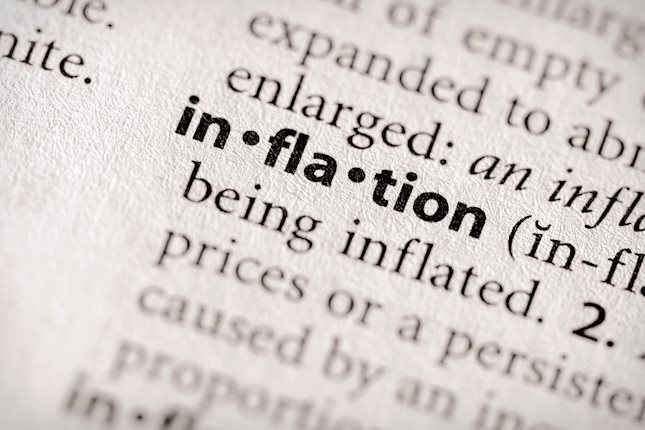- India’s Nifty and Sensex closed in the green for the sixth day in a row on Tuesday.
- Nifty refreshed all-time high above 22,200, Sensex settled above 73,000.
- Nifty and Sensex await the Fed and RBI Minutes for fresh trading impulse.
The Sensex 30 and Nifty 50, India’s key benchmark indices, rebounded on Tuesday, logging the sixth straight day of gains.
Indian indices extended the bullish momentum in the run-up to the release of the Minutes of the US Federal Reserve and the Reserve Bank of India (RBI) policy meetings.
The National Stock Exchange (NSE) Nifty 50 ended 0.34% higher on the day at 22,196.95 while the Bombay Stock Exchange (BSE) Sensex 30 finished at 73,057.40, up 0.48%.
The US stock markets will reopen on Tuesday after the Presidents’ Day holiday on Monday.
Stock market news
- India’s Nifty and Sensex regained upside traction, helped by a rally in private bank stocks and utility sector stocks while ignoring a sell-off in the auto and technology stocks.
- Power Grid Corp, Axis Bank, HDFC Bank, Kotak Bank and NTPC were among the major gainers on the Nifty on Tuesday while losers included Coal India, HeroMoto Corp, Bajaj Auto, TCS and Eicher Motors.
- Among the corporate news, Coal India shares fell 5% after fall in e-auction premium.
- Shares of Whirlpool of India declined after report of promoter off-loading 24% stake.
- Vibhor Steel Tubes debuted on bourses on February 20.
- On Monday, Bajaj Auto announced February 29 as the record date for a proposed buyback plan amounting to Rs 4,000 crore, at Rs 10,000 per share.
- Shares of Paisalo Digital rallied 15% to hit a record high of Rs 164 on Monday, surging 63% in the past month on promoter buying and strong December quarter (Q3FY24) earnings.
- Novartis India share price surges nearly 11% to hit a 52-week high as Novartis AG announces sale plans for the company.
- People’s Bank of China (PBoC) cut the five-year Loan Prime Rate (LPR) by a record 25 bps from 4.20% to 3.95%. The PBOC rate cut failed to excite Asian traders.
- India’s trade data for January showed Thursday a shrinking Trade Deficit of $17.49 billion.
- US Consumer Price Index (CPI) and Producer Price Index (PPI) data came in hotter-than-expected and helped push back the market’s expectations of a Fed rate cut from March to June. Markets are currently pricing a 77% chance of a cut in June, the CME Group’s Fed Watch Tool shows.
- Attention now turns toward the Minutes of the Fed January meeting and American tech major Nvidia Earnings report due on Wednesday, as the Indian economic calendar remains devoid of any top-tier data release until Thursday’s RBI Minutes.
Sensex FAQs
What is the Sensex?
The Sensex is a name for one of India’s most closely monitored stock indexes. The term was coined in the 1980s by analyst Deepak Mohoni by mashing the words sensitive and index together. The index plots a weighted average of the share price of 30 of the most established stocks on the Bombay Stock Exchange. Each corporation's weighting is based on its “free-float capitalization”, or the value of all its shares readily available for trading.
What factors drive the Sensex?
Given it is a composite, the value of the Sensex is first and foremost dependent on the performance of its constituent companies as revealed in their quarterly and annual results. Government policies are another factor. In 2016 the government decided to phase out high value currency notes, for example, and certain companies saw their share price fall as a result. When the government decided to cut corporation tax in 2019, meanwhile, the Sensex gained a boost. Other factors include the level of interest rates set by the Reserve Bank of India, since that dictates the cost of borrowing, climate change, pandemics and natural disasters
What are the key milestones for the Sensex?
The Sensex started life on April 1 1979 at a base level of 100. It reached its highest recorded level so far, at 73,328, on Monday, January 15, 2024 (this is being written in Feb 2024). The Index closed above the 10,000 mark for the first time on February 7, 2006. On March 13, 2014 the Sensex closed higher than Hong Kong’s Hang Seng index to become the major Asian stock index with the highest value. The index’s biggest gain in a single day occurred on April 7, 2020, when it rose 2,476 points; its deepest single-day loss occurred on January 21, 2008, when it plunged 1,408 points due the US subprime crisis.
What major corporations are in the Sensex?
Major companies within the Sensex include Reliance Industries Ltd, HDFC Bank, Axis Bank, ITC Ltd, Bharti Airtel Ltd, Tata Steel, HCL Technologies, Infosys, State Bank of India, Sun Pharma, Tata Consultancy Services and Tech Mahindra.
Information on these pages contains forward-looking statements that involve risks and uncertainties. Markets and instruments profiled on this page are for informational purposes only and should not in any way come across as a recommendation to buy or sell in these assets. You should do your own thorough research before making any investment decisions. FXStreet does not in any way guarantee that this information is free from mistakes, errors, or material misstatements. It also does not guarantee that this information is of a timely nature. Investing in Open Markets involves a great deal of risk, including the loss of all or a portion of your investment, as well as emotional distress. All risks, losses and costs associated with investing, including total loss of principal, are your responsibility. The views and opinions expressed in this article are those of the authors and do not necessarily reflect the official policy or position of FXStreet nor its advertisers. The author will not be held responsible for information that is found at the end of links posted on this page.
If not otherwise explicitly mentioned in the body of the article, at the time of writing, the author has no position in any stock mentioned in this article and no business relationship with any company mentioned. The author has not received compensation for writing this article, other than from FXStreet.
FXStreet and the author do not provide personalized recommendations. The author makes no representations as to the accuracy, completeness, or suitability of this information. FXStreet and the author will not be liable for any errors, omissions or any losses, injuries or damages arising from this information and its display or use. Errors and omissions excepted.
The author and FXStreet are not registered investment advisors and nothing in this article is intended to be investment advice.
Recommended content
Editors’ Picks

EUR/USD trades deep in red below 1.0300 after strong US jobs report
EUR/USD stays under bearish pressure and trades below 1.0300 in the American session on Friday. The US Dollar benefits from the upbeat jobs report, which showed an increase of 256,000 in Nonfarm Payrolls, and forces the pair to stay on the back foot heading into the weekend.

GBP/USD drops toward 1.2200 on broad USD demand
GBP/USD extends its weekly slide and trades at its weakest level since November 2023 below 1.2250. The data from the US showed that Nonfarm Payrolls rose by 256,000 in December, fuelling a US Dollar rally and weighing on the pair.

Gold ignores upbeat US data, approaches $2,700
Following a drop toward $2,660 with the immediate reaction to strong US employment data for December, Gold regained its traction and climbed towards $2,700. The risk-averse market atmosphere seems to be supporting XAU/USD despite renewed USD strength.

Sui bulls eyes for a new all-time high of $6.35
Sui price recovers most of its weekly losses and trades around $5.06 at the time of writing on Friday. On-chain metrics hint at a rally ahead as SUI’s long-to-short ratio reaches the highest level in over a month, and open interest is also rising.

Think ahead: Mixed inflation data
Core CPI data from the US next week could ease concerns about prolonged elevated inflation while in Central and Eastern Europe, inflation readings look set to remain high.

Best Forex Brokers with Low Spreads
VERIFIED Low spreads are crucial for reducing trading costs. Explore top Forex brokers offering competitive spreads and high leverage. Compare options for EUR/USD, GBP/USD, USD/JPY, and Gold.